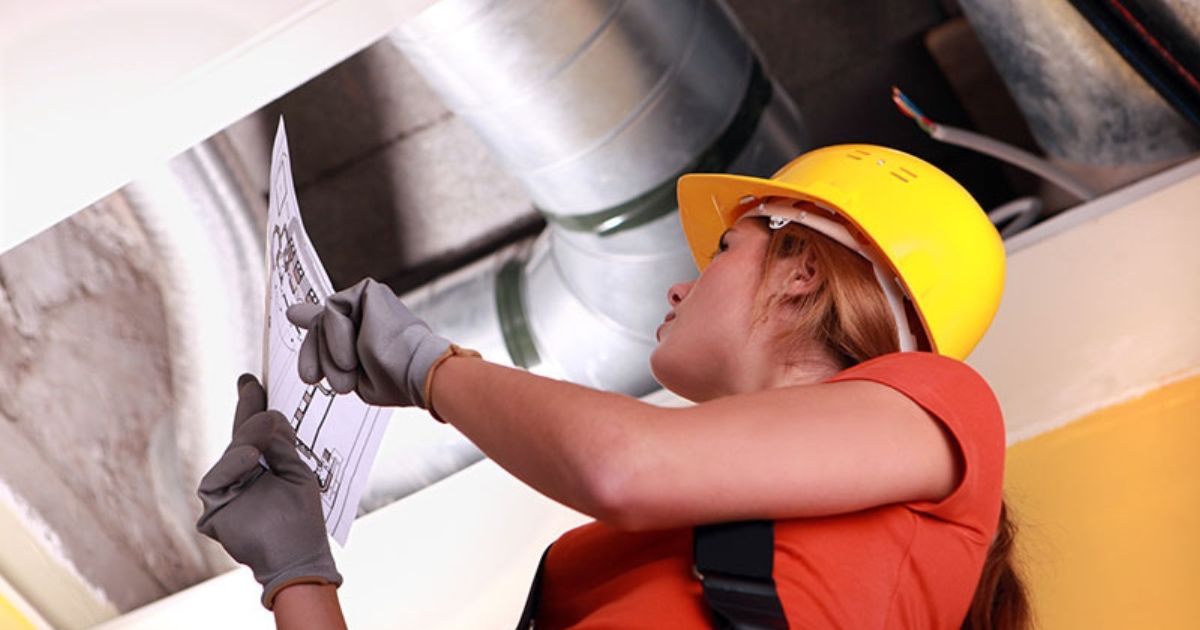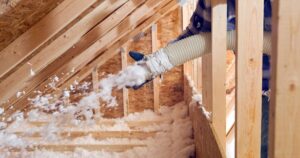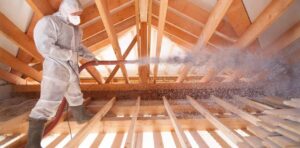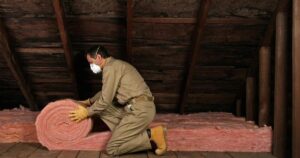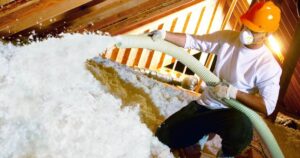When it comes to home insulation, one of the most critical areas to consider is the attic. The level of insulation in your attic can significantly impact your home’s energy efficiency, comfort, and even your energy bills.
In this comprehensive guide, we will look farword to the essential aspects of attic insulation, focusing on the key question.
How thick should insulation be in the attic? We’ll explore the factors that influence your choice, provide facts and figures, and discuss the benefits and drawbacks of various insulation thicknesses.
Why is Attic Insulation Important?
Before we discuss the ideal thickness for attic insulation, it’s essential to understand why attic insulation is crucial. Here are some key reasons:
Energy Efficiency

Proper attic insulation acts as a barrier, preventing warm air from escaping your home during the winter and keeping it out during the summer. This insulation is essential for maintaining a comfortable indoor temperature and reducing the strain on your HVAC system.
Cost Savings
A well-insulated attic can lead to significant energy cost savings. Inadequate insulation allows heat to escape, causing your heating system to work harder, resulting in higher energy bills.
Comfort
Proper attic insulation contributes to a more comfortable living environment. It helps maintain consistent temperatures throughout your home, reducing drafts and cold spots.
Environmental Impact
Reducing energy consumption by improving insulation helps lower your carbon footprint. It’s an eco-friendly approach to home maintenance.
Factors Influencing Attic Insulation Thickness
The ideal thickness of attic insulation can vary depending on several factors. Consider the following when determining the right thickness for your attic:
- Climate
Your geographical location plays a significant role in determining insulation thickness. Colder climates typically require thicker insulation to combat extreme temperatures.
- Type of Insulation
There are various types of insulation, including fiberglass, cellulose, spray foam, and more. Each type has different R-values, which measure their insulating capacity. The higher the R-value, the better the insulation’s thermal performance.
- Local Building Codes
Check your local building codes and regulations to ensure compliance. Some regions have specific requirements for attic insulation thickness.
- Your Budget
Your budget will also influence your choice of insulation thickness. High-quality insulation materials with greater thickness often come at a higher cost.
- Existing Insulation
If your attic already has some insulation, consider adding more if it’s not up to current standards.
Facts and Figures: Understanding R-Values
When determining attic insulation thickness, it’s essential to understand R-values. The R-value is a measure of the insulation’s thermal resistance. Higher R-values indicate better insulating properties. Here are some recommended R-values based on climate zones:
- Zone 1 (Hot Climate): R30 to R60
- Zone 2 (Mixed Climate): R38 to R60
- Zone 3 (Cold Climate): R49 to R60
- Zone 4 (Very Cold Climate): R49 to R60
These values can guide your choice of insulation thickness based on your specific climate zone.
Benefits of Proper Attic Insulation Thickness
Maintaining the right attic insulation thickness offers several benefits:
- Energy Savings
Proper insulation thickness reduces energy consumption, leading to lower utility bills and cost savings.
- Improved Comfort
A well-insulated attic ensures a comfortable living environment with consistent temperatures.
- Extended Roof Lifespan
Insulation helps regulate attic temperatures, preventing the roof from deteriorating due to extreme heat or cold.
- Environmental Benefits
Reducing energy consumption and carbon emissions positively impacts the environment.
Drawbacks of Inadequate Attic Insulation
On the flip side, inadequate attic insulation can lead to the following drawbacks:
- High Energy Bills
Insufficient insulation results in energy wastage, leading to higher heating and cooling costs.
- Temperature Fluctuations
Inconsistent indoor temperatures can lead to discomfort and the need for more extensive HVAC usage.
- Reduced Home Value
A poorly insulated attic can decrease your home’s value and marketability.
- Environmental Impact
Inefficient energy use contributes to higher carbon emissions, negatively affecting the environment.
Certainly, let’s continue discussing the various aspects of attic insulation.
Types of Attic Insulation
Understanding the different types of attic insulation is essential when deciding on the right thickness. Each type has its own characteristics and benefits. Here are some common types:
Fiberglass Insulation
Fiberglass insulation consists of tiny glass fibers and is one of the most popular choices. It’s known for its cost-effectiveness and thermal resistance. When considering thickness, you can choose from various R-values to achieve the desired insulation level.
Cellulose Insulation
Cellulose insulation is made from recycled paper and treated with fire-resistant chemicals. It’s eco-friendly and provides excellent thermal performance. The thickness of cellulose insulation can be adjusted to achieve the recommended R-values.
Spray Foam Insulation
Spray foam insulation is an excellent choice for air sealing and insulation. It’s highly effective but can be more expensive. The thickness of spray foam insulation can vary depending on your energy efficiency goals.
Reflective Insulation
Reflective insulation uses radiant barriers to reflect heat away from your home. It’s often used in warmer climates. The effectiveness of this insulation depends on proper installation and the reflective surface.
Evaluating Your Existing Attic Insulation
Before adding more insulation to your attic, it’s crucial to evaluate the current state of your insulation. Look for signs of wear, damage, or compression. In some cases, you may need to remove old insulation and start fresh with a new layer.
FAQs
What type of insulation is best for an attic?
Fiberglass batt is considered to be the best insulation for attics. Compared to other insulation materials, it is the cheapest and easiest to install.
What should attic insulation look like?
The first and most common type of attic insulation is fiberglass batt insulation. It looks remarkably like cotton candy and clouds, and it’s likely the image you envision when someone says “attic insulation.”
Should an attic be fully insulated?
It’s better to insulate your attic floor, especially if you’re on a budget or you have a large attic to insulate.
Conclusion
The ideal thickness for attic insulation is a critical consideration for homeowners looking to improve energy efficiency, comfort, and savings. To determine the right thickness, consider your climate, insulation type, budget, and local regulations. Understanding R-values is essential for making an informed decision.
Balancing the benefits of proper attic insulation with potential drawbacks like initial costs is a key step toward creating an energy-efficient and comfortable home. Whether you choose fiberglass, cellulose, spray foam, or reflective insulation, ensure it’s installed correctly to achieve the desired R-values.
In summary, choosing the right attic insulation thickness is a personalized decision, and it’s crucial to factor in your unique circumstances. By doing so, you’ll be on your way to a more energy-efficient, comfortable, and environmentally responsible home.

